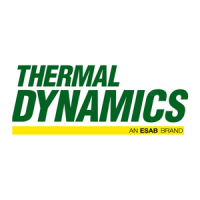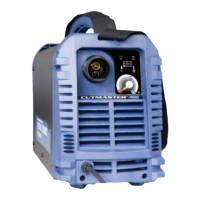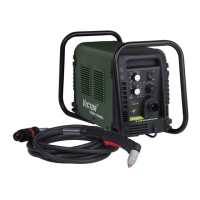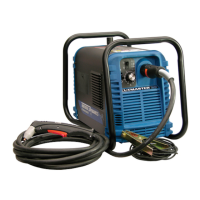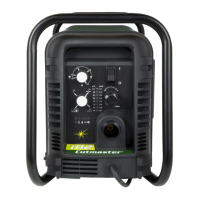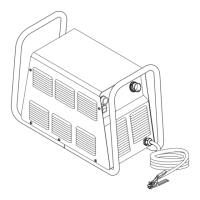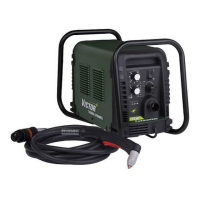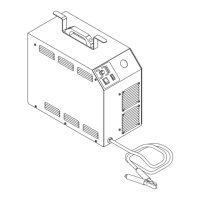CUTMASTER 40mm
OPERATION 4T-2 Manual 0-5118
4T.02 Cut Quality
NOTES
Cut quality depends heavily on setup and
parameters such as torch standoff, alignment
with the workpiece, cutting speed, gas pressures,
and operator ability.
Cut quality requirements differ depending on ap-
plication. For instance, nitride build-up and bevel
angle may be major factors when the surface will
be welded after cutting. Dross - free cutting is
important when nish cut quality is desired to
avoid a secondary cleaning operation. The fol-
lowing cut quality characteristics are illustrated
in the following gure:
Kerf Width
Cut Surface
Bevel Angle
Top Edge
Rounding
Cut Surface
Drag Lines
Dross
Build-Up
Top
Spatter
A-00007
Cut Quality Characteristics
Cut Surface
The desired or specified condition (smooth or
rough) of the face of the cut.
Nitride Build - Up
Nitride deposits can be left on the surface of the cut
when nitrogen is present in the plasma gas stream.
These buildups may create difficulties if the mate-
rial is to be welded after the cutting process.
Bevel Angle
The angle between the surface of the cut edge and
a plane perpendicular to the surface of the plate.
A perfectly perpendicular cut would result in a
0° bevel angle.
Top - Edge Rounding
Rounding on the top edge of a cut due to wearing
from the initial contact of the plasma arc on the
workpiece.
Bottom Dross Buildup
Molten material which is not blown out of the
cut area and resolidifies on the plate. Excessive
dross may require secondary cleanup operations
after cutting.
Kerf Width
The width of the cut (or the width of material
removed during the cut).
Top Spatter (Dross)
Top spatter or dross on the top of the cut caused by
slow travel speed, excess cutting height, or cutting
tip whose orifice has become elongated.
4T.03 General Cutting Information
WARNINGS
Disconnect primary power at the source before
disassembling the power supply, torch, or torch
leads.
Frequently review the Important Safety
Precautions at the front of this manual. Be
sure the operator is equipped with proper
gloves, clothing, eye and ear protection.
Make sure no part of the operator’s body
comes into contact with the workpiece while
the torch is activated.
CAUTION
Sparks from the cutting process can cause
damage to coated, painted, and other surfaces
such as glass, plastic and metal.
NOTE
Handle torch leads with care and protect them
from damage.
Piloting
Piloting is harder on parts life than actual cutting
because the pilot arc is directed from the electrode
to the tip rather than to a workpiece. Whenever
possible, avoid excessive pilot arc time to improve
parts life.
